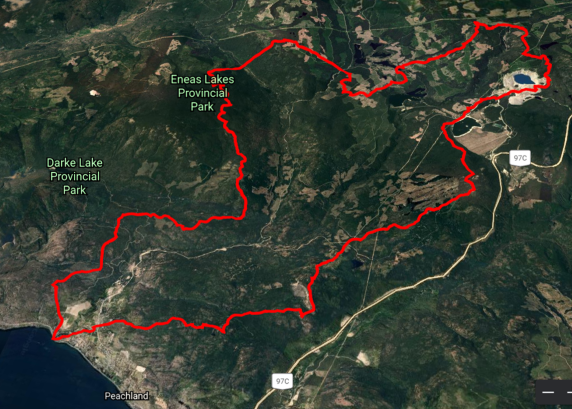Jinyu Hui

Jinyu is a PhD student in the Department of Department of Earth, Environmental and Geographic Sciences.
Before starting her PhD program at UBC Okanagan in May 2021, Jinyu graduated from Xi’an Jiaotong University in China in 2020 with an MSc and in 2016 with a BSc. Her research interest is how climate and forest cumulatively affect hydrological processes. She has benefited from the wide gamut of XJTU’s syllabi content in her undergraduate studies, which helped her gain comprehensive knowledge in the core area of environmental science. Her masters focused on eco-hydrological processes. For her PhD study, she will try to analyze the relative contributions of climate and forest to hydrological extremes. She is skilled at using eco-hydrological models as well as processing multi-source data (e.g., remote sensing, model outputs, NetCDF file, etc.) by using multiple scientific tools, such as R, C++, SPSS, and ArcGIS.
About
Jinyu Hui
PhD Student, Department of Earth, Environmental and Geographic Sciences
Email: jyhui@mail.ubc.ca
Research
Hydrology
Cumulative effects of forest disturbance, land use, and climate change on silwɬkʷ (water) quantity and quality with Dr. Adam Wei.
Many different factors, which act at different scales in space and time, impact the quality and quantity of siwɬkʷ (water) within a given watershed. These factors can be relatively small and short-lived, like the effects of a few trees being harvested around a stream, or they can be very large and long-lasting, like the effects of climate change. These effects accumulate over space and time, so scientists refer to them as cumulative effects. Studying cumulative effects – as opposed to just one factor at a time – provides a much clearer picture of how watersheds function and change, allowing for better management decisions.
Individually, climate and forest conditions influence hydrological patterns and processes, such as how much snow falls on the ground with a watershed, how fast the snow melts, how much of the snowmelt soaks into the soil, how high the streams run in spring, and how quickly they dry out in summer. In combination, forest and climate conditions may act together or in opposition regarding these processes. Generally, when they offset one another, we see less variation. Conversely, if conditions act in the same direction (are additive), the risk of extreme events increases (floods and droughts).
Snow-dominated watersheds are the norm in BC’s Interior. In a given year, the highest flows occur during the spring freshet, when melting snow and rain saturate the soil, so siwɬkʷ (water) runs off rapidly into streams and rivers rather than soaking slowly into the ground. The lowest flows occur in summer when snowmelt has ended, during which time flows are sustained by siwɬkʷ that soaked into the soil at an earlier date. In autumn, stream flow increases with rainfall. Plants also influence streamflow by taking up lots of siwɬkʷ through their roots when they are actively photosynthesizing in spring and summer, then slowing their uptake in fall and winter when they are dormant. Dams allow for siwɬkʷ storage and release later in the year.
Generally speaking, ecohydrological models are mathematical simplifications of watershed ecosystems. Physically-based ecohydrological models combine several formulas that describe physical laws (like the conversion of mass into energy and momentum) into one equation. The output of the equation describes a particular ecohydrological process, like the rate of snowmelt or stream flow, allowing us to make predictions about these processes based on cumulative effects of multiple co-occurring factors like forest and climate conditions.
Publications
Projected soil organic carbon loss in response to climate warming and soil water content in a loess watershed.
Zhao, F., Wu, Y., Hui, J., Sivakumar, B., Meng, X. and Liu, S.
2021. Carbon balance and management, 16(1), pp.1-14.
Parameter Optimization for Uncertainty Reduction and Simulation Improvement of Hydrological Modeling.
Hui, J., Wu, Y., Zhao, F., Lei, X., Sun, P., Singh, S.K., Liao, W., Qiu, L. and Li, J.
2020. Remote Sensing, 12(24), p.4069.
Remote sensing and modeling fusion for investigating the ecosystem water-carbon coupling processes.
Sun, P., Wu, Y., Xiao, J., Hui, J., Hu, J., Zhao, F., Qiu, L. and Liu, S.
2019. Science of the total environment, 697, p.134064.



